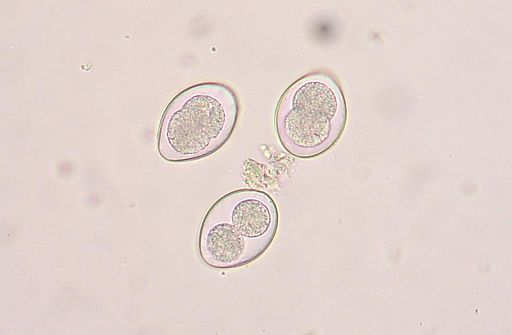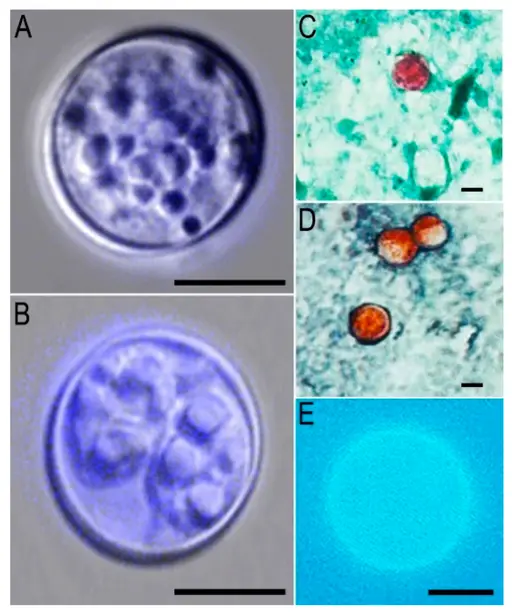Sporozoa
Definition, Examples, Classification and Characteristics
Definition: What is Sporozoa?
Sporozoa is a large subphylum consisting of many unicellular, intracellular parasites. Currently, the group is suggested to contain over 65,000 species with varying morphological characteristics. Given that they are strictly parasitic, members of the subphylum are responsible for a variety of diseases in human beings (e.g. Malaria, Babesiosis, and Cyclosporiasis, etc).
The majority of these organisms are also characterized by a complex life cycle that not only requires two hosts (vertebrate and invertebrate) but also alternates between sexual and asexual stages.
* The subphylum Sporozoa is also referred to as Apicomplexa in some books.
* In some books, Sporozoa is ranked as a class rather than a subphylum.
Some of the most common organisms in this group include:
- Coccidia
- Piroplasms
- Malaria parasites (Plasmodium)
- Haemoproteus
Classification of Sporozoa
· Kingdom: Protozoa - Single-celled eukaryotes that either exist as parasites or as free-living organisms. Sexual and asexual reproduction has been observed in some of the species.
· Subphylum: Sporozoa - A group that exclusively consists of parasitic protozoa.
Characteristics of Sporozoa
While some multinucleate forms have been identified during the life cycle of these organisms, they are generally uninucleate. According to the Levine et al. classification, all members of this group contain a group of structures collectively known as apical complex that allow them to attach and penetrate host cells.
As the name suggests, the great majority of Sporozoa produce sporozoites at a given point in their life cycle. This is the motile and infective form of the organism that causes disease in the host.
Based on molecular studies, the surface proteins (located in the surface coat of the organisms) have been shown to be GPI-anchored. In such parasites as Plasmodium falciparum, this complex (a biomolecule consisting of carbohydrates, lipids, and phosphates) is attached to the C-terminus of surface proteins where it acts as a posttranslational modification biomolecule of the cell surface.
Here, the complex contributes to the pathogenicity of the parasites thereby contributing to the clinical symptoms of the disease caused.
Motility
Unlike the adult/mature forms of some protozoa, sporozoans do not have flagella or cilia used for locomotion. For this reason, they depend on gliding, twisting, and bending to move.
Whereas gliding allows for active zoite displacement, twisting and bending actions are primarily used for changing direction during motion. For the zoites, gliding simply involves the backward translocation of a junction between the surface of the organism and a substrate along the longitudinal axis of the zoite.
* While gliding over a surface, these parasites have been shown to leave a trail of circumsporozoite protein. Today, these trails are widely accepted as evidence of gliding motility among Sporozoa parasites.
* Gliding of Sporozoans has also been associated with the capping phenomenon where the parasites aggregate on their surface and then release them to the posterior pole.
Gliding also allows the parasites to penetrate host cells in order to maintain an intracellular lifestyle. For instance, in order to penetrate red blood cells of the host (an activity that is actin-dependent); the annular junction has been shown to move backward over the surface of the parasite (malaria parasite).
Here, the actin-dependent motor causes the capping of surface molecules thereby resulting in the gliding movement that allows the parasite to penetrate the surface of the host cell.
* When observed under the microscope, the gliding action can be seen to involve the creation of undulating ridges/waves in the membrane.
Feeding
Being very simple organisms, members of the subphylum Sporozoa lack organs required for feeding and digesting food material in their environment (within the cell of the host). For this reason, they heavily rely on osmosis to absorb nutrients (fluid nutrients). Within the host cell, sources of nutrition for the organism include dissolved cytoplasm, dissolved food material, and tissue fluid, etc.
* For some of the species, feeding has been shown to involve surrounding the food (through phagocytic action).
Some of the other characteristics of Sporozoa include:
· While they are simple and do not have many of the organelles found in other eukaryotes, Sporozoa have been shown to have micropores
· Schizonts of Plasmodium and other parasites are capable of phagotrophy (engulf food particles through phagocytic nutrition)
Types of Spores
Sporozoans have also been grouped based on general spore-morphology.
The four groups of Sporozoa based on general spore morphology include:
· Apicomplexan - Form unique oocysts that contain the sporozoites (infective forms of the parasites)
· Microsporan - Form unicellular spores that contain coiled polar tubes
· Haplosporidian - Produce unicellular spores lacking polar filaments within the tissues of aquatic invertebrates
· Paramyxean - Characterized by spore-within-spore arrangements
Reproduction
As compared to a majority of other Protozoa, the complex life cycle that alternates between sexual and asexual stages are one of the defining characteristics of Sporozoans. Here, sexual reproduction produces zygotes that develop to form sporozoites which in turn reproduce sexually or asexually.
Sexual and Asexual Cycles
For Sporozoans, the sexual process of reproduction involves the formation of opposite sex gametes that may be structurally similar or different. For instance, whereas gametes produced by Coccidiomorpha tend to be structurally different, those produced by Gregarinina are generally similar.
Here, it's also worth noting that for different organisms, different processes are involved in the formation and production of gametes. In Gregarinina, the division of gamont results in the production of gametes. However, in Coccidiomorpha, macrogametes produce the growing gamonts (rather than during division) during microgametogenesis.
The gametes produced by gametocytes then unite to form a zygote. While it's possible to distinguish the sex gametes by size and shape in some species, this is not possible in others. To form the zygote, the microgamete penetrates the macrogamete for fertilization.
The zygote formed through fertilization of the female gamete goes through sporogony to form sporozoites within the oocysts. This may involve a simple division of the zygote or multiple divisions depending on the organism. The sporozoites formed during this phase are the infective forms that penetrate host cells and cause disease.
Within the host cells, the sporozoites (which are known as trophozoites at this stage) can continue reproducing asexually through a process known as schizogony. This involves division of the nucleus to form a multinuclear schizont that undergoes segmentation to form individuals known as merozoites. Some of these individuals penetrate new cells where asexual reproduction continues while others develop to form gamonts involved in sexual reproduction.
* During the metagamic period of their life cycle, Sporozoa can also form spores that are characterized by a protective covering. This form of the parasite allows them to survive unfavorable environmental conditions for a long period of time.
Return to Parasites under the Microscope
Return from Sporozoa to MicroscopeMaster home
References
Heinz Mehlhorn. (2001). Encyclopedic Reference of Parasitology: Biology, Structure, Function.
Levine, Norman D. (2014). Sporozoa. College of Veterinary Medicine, University of Illinois, Urbana, Illinois.
M. Prakash. (2008). Molecular Biology of Life.
Yevgeniy M. Kheysin. (2013). Life Cycles of Coccidia of Domestic Animals.
Links
https://theodora.com/encyclopedia/s2/sporozoa.html
Find out how to advertise on MicroscopeMaster!






